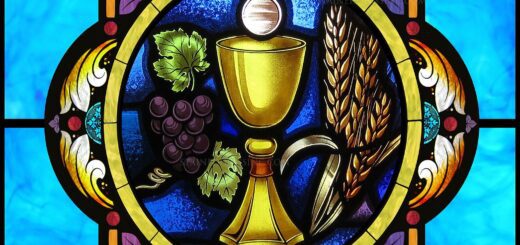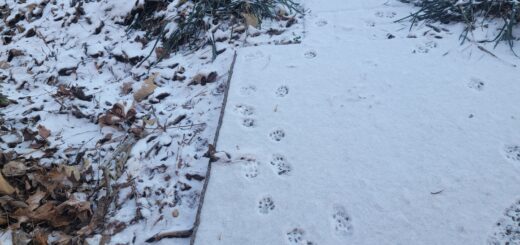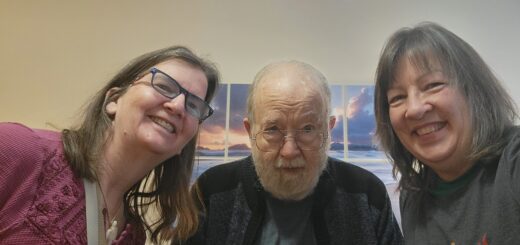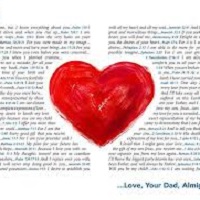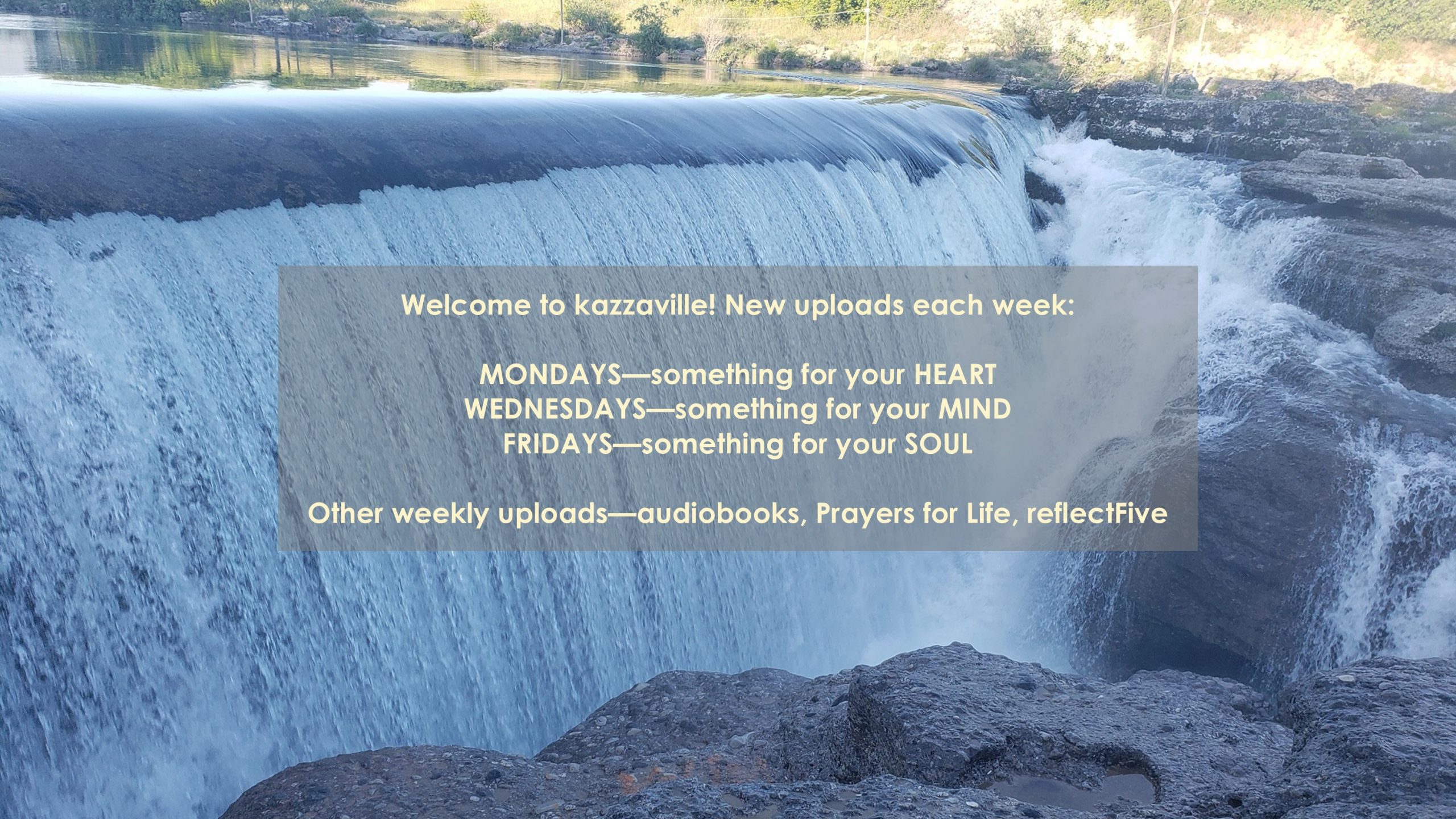Kintsugi: Beauty in the Broken (Testimony Sunday)

Testimony Sunday – December 29th, 2024
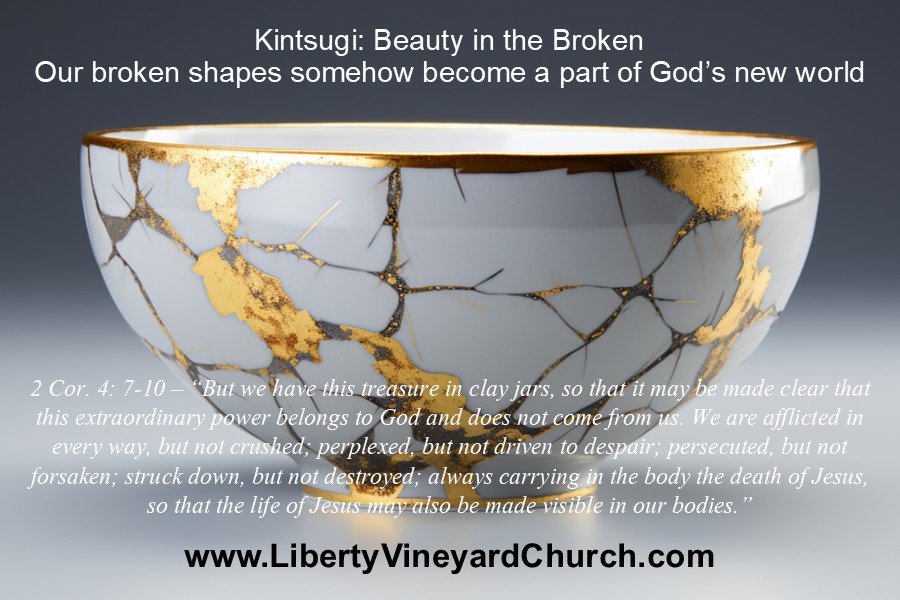
Kintsugi: Beauty in the Broken
Our broken shapes somehow become a part of God’s new world
2 Cor. 4: 7-10 – “But we have this treasure in clay jars, so that it may be made clear that this extraordinary power belongs to God and does not come from us. We are afflicted in every way, but not crushed; perplexed, but not driven to despair; persecuted, but not forsaken; struck down, but not destroyed; always carrying in the body the death of Jesus, so that the life of Jesus may also be made visible in our bodies.”
One of the most curious things that the New Testament tells us is that after his resurrection, Jesus’s wounds were still visible. God restores us, yes, that is true! God also honors our brokenness, and the broken shapes somehow become a part of God’s new world.
The Japanese art of kintsugi, whereby broken tea ware is mended with lacquer and covered in gold, does not just “fix” or repair a broken vessel. Kintsugi actually makes the broken pottery even more beautiful than the original, by joining the broken pieces together with gold. The resulting work is more exquisite than the original before the break.
From Suffer Strong (Katherine and Jay Wolf): “The story of kintsugi—this style of pottery—may be the most perfect embodiment of all our trauma-shattered lives … Instead of throwing away the broken beloved pottery, we’ll fix it in a way that doesn’t pretend it hasn’t been broken but honors the breaking—and more so, the surviving—by highlighting those repaired seams with gold lacquer. Now the object is functional once again and dignified, not discarded. It’s stronger and even more valuable because of its reinforced, golden scars.”
Kintsugi does not try to hide the damage. Rather, it highlights the repair, the imperfections becoming the very basis of its beauty and value. The restored pottery now has an authentic story which speaks of scars and strength, resilience and reality.
God, the one who restores, is the kintsugi Master who skillfully and tenderly puts the broken pieces of our lives back together. God doesn’t impose restoration on us. We are invited to participate with God in the restoration of our own lives (and subsequently in the restoration of the lives of others). This can be a slow and painstaking process. We have a part to play in the restoration process, as we practice the spiritual disciplines: meditation, prayer, fasting, and study; simplicity, solitude, submission, and service; confession, worship, guidance, and celebration. Little by little, God’s restoration of our broken shapes become the very places where God’s treasures are most clearly experienced and encountered.
From Kiss the Wave (Dave Furman) – “Similar to the Japanese art of Kintsugi, our rough edges and cracks are filled in with gold to point to the greatness of God … We can embrace God in our trials with faith that God is doing a work in us beyond our comprehension. Our scars are not things to run from or to hide from others. Through them we exalt the one who is conforming us more and more into the image of Christ.”
The beautiful thing is that as we share authentic stories of how we are participating with God in the restoration of our own lives, others are encouraged and strengthened in their own journeys.
How about you? What has God done in your life in 2024? You might be in the middle of some kind of restoration process. You might feel like you’re at the very beginning and have no idea how things will turn out. I want to invite you to share your authentic story, in the midst of scars and strength, resilience and reality. The Lord is present to heal and to save and will help us on our journeys on the way of love! Come, Holy Spirit!
